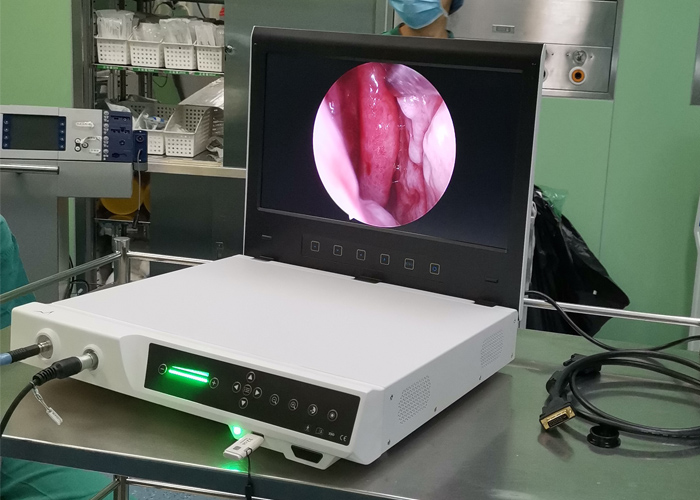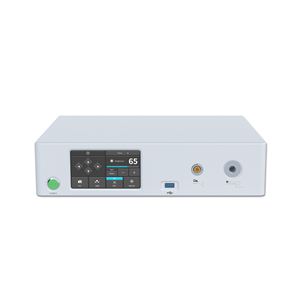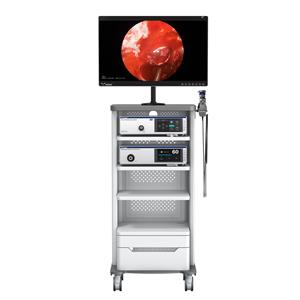【Hysteroscopy】Intubation of fallopian tube orifice under hysteroscopy
At present, hysteroscopy has become a common means of examination and treatment of female infertility. You can directly and clearly observe the intrauterine conditions of infertile patients, understand whether there are intrauterine factors that cause infertility, and perform necessary surgical treatments for abnormal conditions, such as endometrial polyp removal, submucosal fibroids removal, and uterine Lumen adhesion separation, etc.; it is important to perform hysteroscopic tubal orifice intubation dredging to check the patency of the fallopian tube. If the fallopian tube is found to be blocked or blocked, the dredging treatment can be performed at the same time, and the effect is very satisfactory.

Intubation of fallopian tube orifice under hysteroscope:
Use rigid hysteroscopy for inspection. Methods: The patient took the bladder lithotomy position, and used the probe to detect the depth and direction of the uterine cavity, and dilated the cervical canal to size 7 (the outer diameter of the sheath was 6.5mm). Use 5% glucose solution as the uterine dilatation solution, and slowly insert the hysteroscope. According to the first uterine fundus, uterine horns and fallopian tube opening, the anterior, posterior, left and right walls of the posterior uterus are examined in order. Observe the cervical canal when exiting the hysteroscope. During the inspection, a tubal orifice cannulation is performed, that is, a medical plastic catheter with an outer diameter of 1.6mm is inserted into the oviduct opening under direct vision, and diluted methylene blue solution (with 80,000 units of gentamicin and dextran added) Methsone (10mg) was passed through, and the amount of through each side was 40 mL, and pressure injection was given to those who were not smooth or obstructed. Observe the fluid flow through hysteroscopy. Result evaluation: There is no resistance, no reflux, or resistance, but the resistance disappears after pressurized injection, the fallopian tube is unobstructed. There is a certain resistance, there is still resistance after pressurized injection, or the resistance is large, the resistance is reduced but not disappeared after pressurized injection, the fallopian tube is not smooth. The resistance is large, and the resistance is still large after pressurized injection, it is the fallopian tube obstruction. If the fallopian tube is not smooth or blocked, it can be judged according to the resistance of the fluid, and there is no reflux.
The inner diameter of the lumen of the proximal end of the fallopian tube 4~5cm is only 1mm or less, which is prone to adhesion or blockage due to inflammation or endometrial fragments. During hysteroscopic intubation of the fallopian tube orifice, the syringe can directly inject the liquid into the fallopian tube cavity at a pressure that is several or even ten times greater than that of the traditional fallopian tube drainage, thereby causing partial adhesion of the fallopian tube lumen and mild to moderate pressure. The obstruction can be separated and dredged, and the number of cases of unobstructed fallopian tube after operation has increased significantly compared with that before operation.
The traditional method of passing fluid through the fallopian tube, which only depends on the resistance of the drug injection, is blind and unreliable, and the treatment effect is poor. Generally, it is only suitable for slight adhesion, and it cannot be cleared for heavier adhesion, distortion, and blockage. Laparoscopic tubal drainage is only effective for pelvic adhesions and obstruction of the distal fallopian tube. When intubating the fallopian tube orifice under hysteroscopy, the catheter is directly inserted into the interstitial part of the fallopian tube, and the pressure of the syringe is several times or even dozens of times higher than that of the traditional fluid drainage, which makes the fallopian tube cavity partly adherent or light to medium. The degree of obstruction can be separated and dredged. However, for the obstruction site is only a hole-like dredging, the obstruction is not completely opened, and the transport function of the fertilized egg is affected. To solve this problem, the combined treatment of hysteroscopy is better.
Hysteroscopic intubation to treat fallopian tube obstruction has the following advantages:
(1) Operation under direct vision, high accuracy.
(2) The pressure in the lumen of the fallopian tube is high through the pressure injection of the fluid through the catheter, and the treatment effect is better for the proximal fallopian tube obstruction or partial adhesion of the fallopian tube lumen, and the adhesion is easy to be washed away.
(3) Other intrauterine diseases that cause infertility can also be found.




